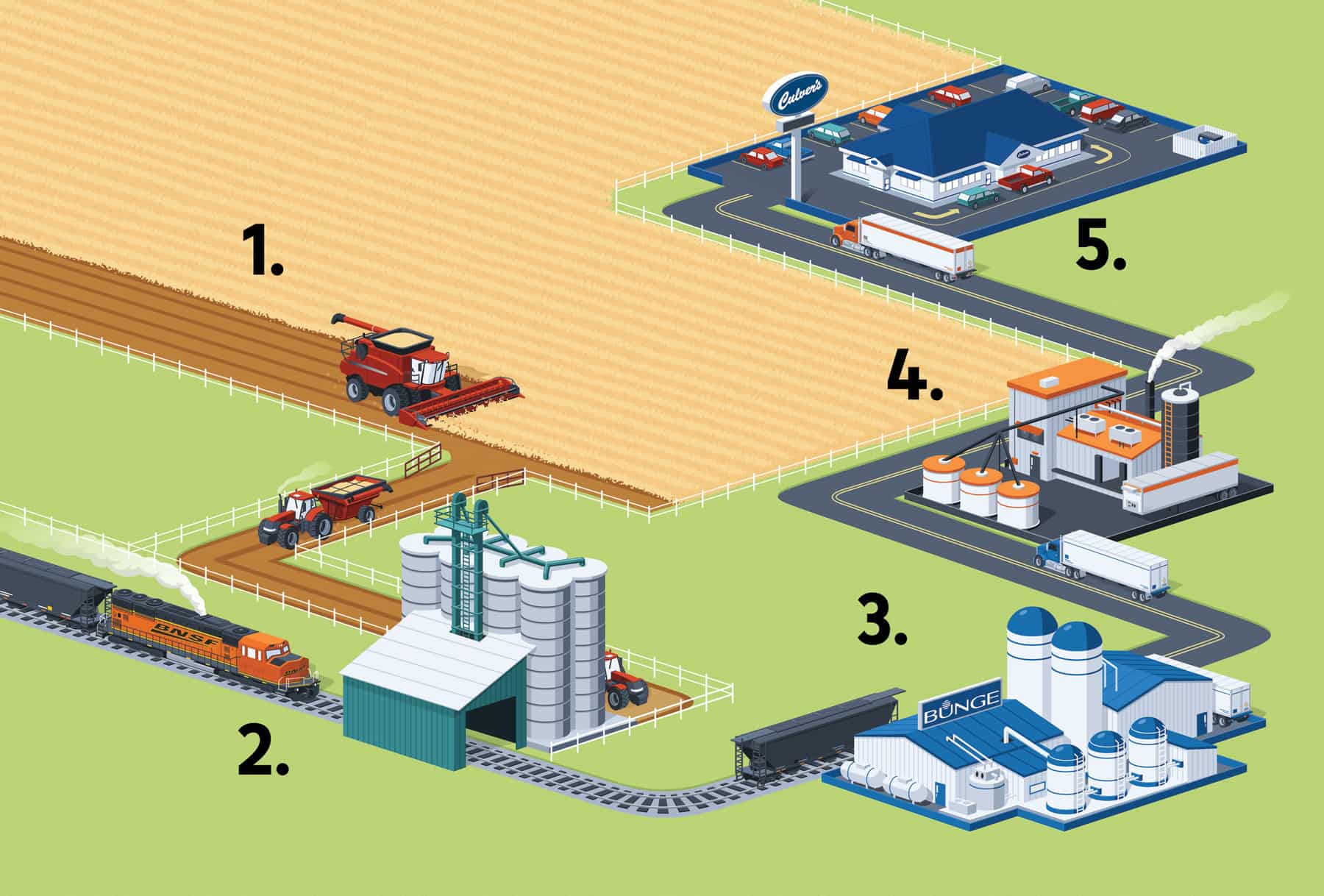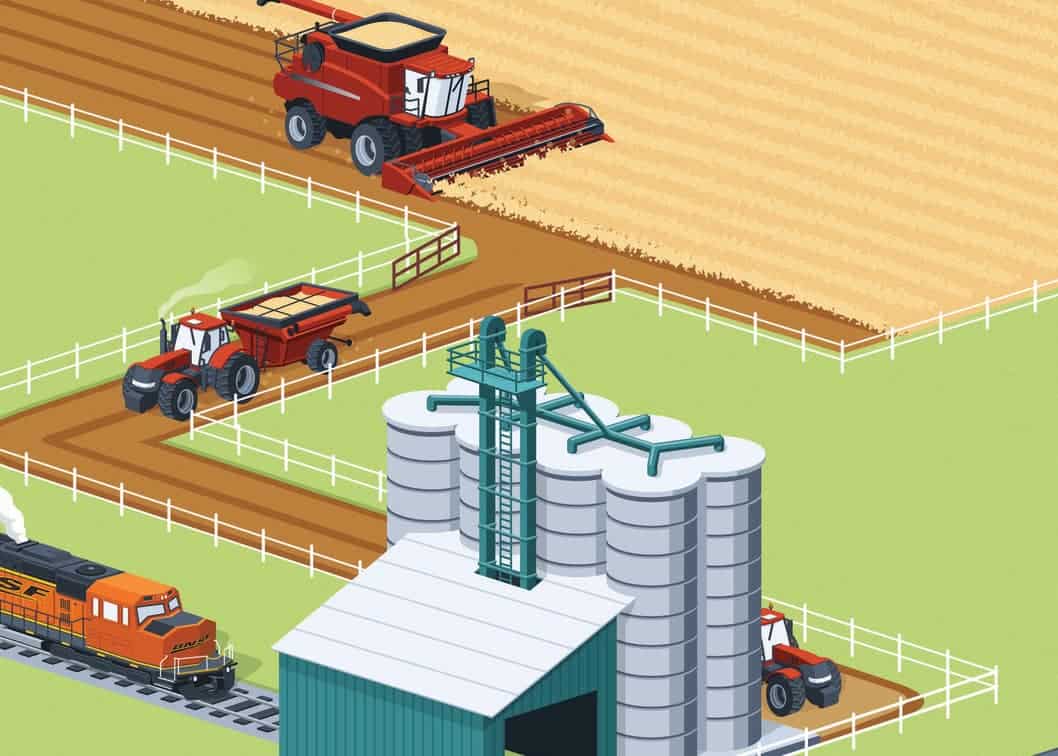There are many different ways a crop can make its way from the field to the consumer. Even within a specific commodity, the route can vary greatly, depending on the farm’s location and the final product or destination.
The process encompasses a number of storage and processing facilities, and it can include transportation by truck, rail and barge. Soybeans, for example, are handled an average of 2.4 times and travel an average of 716 miles between the farm and export position or crushing plant, according to the United Soybean Board.
Here’s how soybeans make their way from the farm to the consumer via Culver’s restaurant:

1. Harvest
American farmers produced 4.31 billion bushels of soybeans in 2016, with an average yield of 52.1 bushels per acre, according to U.S. Department of Agriculture. Soybeans were harvested from a record 82.7 million U.S. acres last year.
2. Country Elevator
Around 75 percent of soybeans are initially stored on the farm or delivered by truck to a nearby country elevator, according to the United Soybean Board. Here, they are stored and distributed for direct use, processing or export, and they may be cleaned and dried. Depending on location, soybeans may be transported to a terminal elevator before moving on.
3. Crushing Facility
From the elevator, soybeans are transported by rail, truck or barge to one of 60 processing or crushing facilities in the U.S. Here, the carbohydrates and oil are separated and further processed. At Bunge North America facilities, for example, soybeans may be processed into edible oils and other ingredients for food manufacturers.
4. Manufacturing Plant
Soybean ingredients destined for Culver’s restaurants are transported to production facilities, where they are combined with ingredients supplied by local farmers to produce buns, chicken tenders, soups, salad dressings, fries, waffle cones, custard toppings and other menu items.
5. Culver’s
Food products and manufactured ingredients are transported via truck to 500 Culver’s restaurants in 22 states, where they are enjoyed by consumers.












